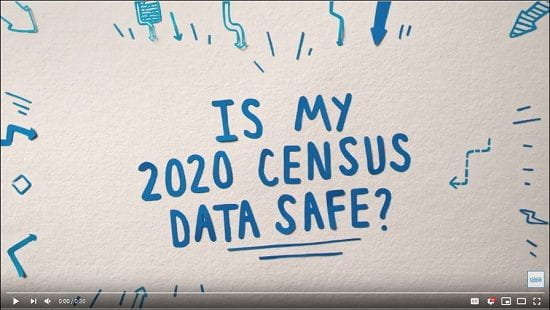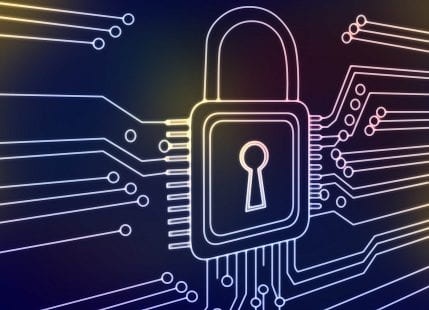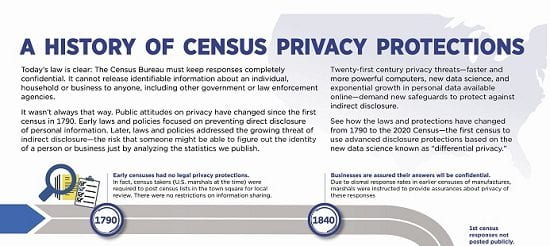Privacy, Data Security, and You
The 2020 Census is the first to use the Internet as the primary response mode. While this change offers the convenience of responding using a phone, tablet or computer, it also provides the opportunity for fraud through phishing schemes that seek to exploit and victimize. You are the first line of defense protecting the privacy, security, and accuracy of the Census and your data:
- The Census Bureau WILL NOT send unsolicited emails. Your official invitation to respond to the Census will come through the U.S. Postal Service to your real world mailbox.
- The Census Bureau WILL NOT ask for donations, credit card or bank account numbers, social security numbers.
- Verify the identify of Census Bureau staff who come to your door. They should have a photo ID with expiration date and the Dept of Commerce watermark.
- Call the Census Bureau at 800-923-8282 if you have questions about the identify of anyone at your home claiming to work for the Census Bureau. Call your local police if you determine that the visitor was not an authorized Census employee.
Legal Protections
Your data is protected by Title 13 of the U.S. Code which prevents the Census Bureau or its employees from sharing your data with any other government agency, including law enforcement, immigration, or landlords. Your data cannot be used to determine your eligibility for government benefits. The Census Bureau can only use data collected for statistical purposes. You can learn more about data protection and privacy at http://www.census.gov/privacy
Technology Protections
The Census Bureau employs technological methods to protect your data. All web data submissions are encrypted to strengthen protection for the information collected online. Census Bureau online surveys do not use cookies to customize your online experience. Census Bureau data storage is heavily secured.
The image links to further technical descriptions of levels of technological security employed by the Census Bureau.
Statistical Methods
For 50 years the Census Bureau has used a variety of statistical methods to prevent individuals being identified based upon the statistical tables published from the decennial census. Methods used include: a) suppressing release of whole tables; b) suppressing release of data variables when there were fewer than a specified number of people or housing units in the category (whether racial, gender, geographic, etc.); c) confidentiality edits using rules‐based “data swapping” at the individual record level
For more discussion of methods used, see McKenna, Laura. 2018. Disclosure Avoidance Techniques Used for the 1970 through 2010 Decennial Censuses of Population and Housing. Research & Methodology Directorate, U.S. Census Bureau.




